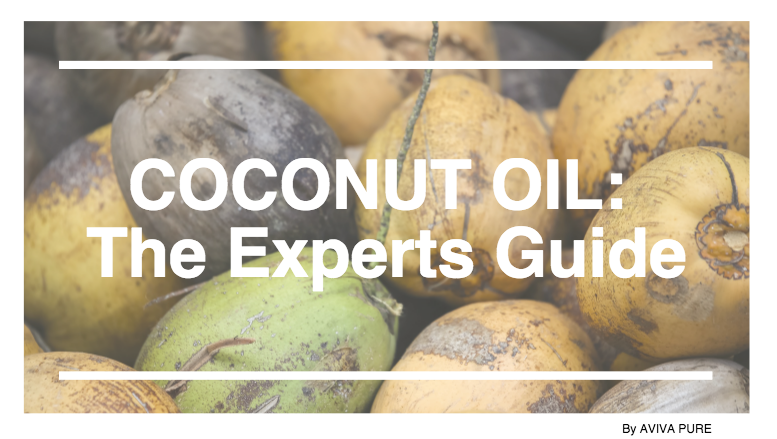
Everyone agrees that coconut oil is good. It boosts your health, brightens your skin, calms your frizz and allows you to do more in your life.
But what's lacking is an easy to use, all-in-one, step-by-step guide on how to implement these benefits.
Today you're gonna learn everything there is to know about Coconut Oil.
In this post, I'll walk you through how to choose the best type of coconut oil for you, the most powerful benefits of coconut oil, answer your commonly asked questions and give you the videos, tools and recipes you need to master coconut oil.
Let's begin.

Browse by Category: Click any of the links below to jump to each category.
Where Does Coconut Oil Come From?
Nutritional Profile of Coconut Oil
Coconut Oil for Internal Health
Different Types of Coconut Oil (Which One is Best for Me?)
Coconut Oil Benefits for Skin and Hair
Coconut Oil For Teeth and Gums
FAQ (Can I microwave? Will it Spoil? Etc.)
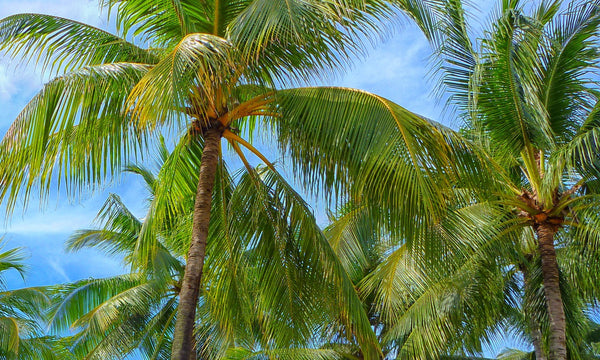
Where Does Coconut Oil Come From?
Trick question...it comes from coconuts ![]()
But which countries are responsible for producing the actual coconut oil?
According to the United States Department of Agriculture, approximately 3,407,000 Metric Tons (MT) of coconut oil were produced around the world in 2015.
To put this into perspective:
1 MT = 1,000 kg
1,000 kg = 2,204.62 lb
So, 3,407,000 MT =
7,511,149,273 lbs!
Out of this, 86% of the world's coconut oil comes from three countries: Philipines (46%), Indonesia (29%) and India (13%).

What do these top 5 countries have in common?
HOT, HUMID WEATHER!
Coconut Trees (Cocos nucifera) are unable to survive in cold weather climates, and will have a hard time thriving in temperate zones. Instead, they require tropic regions (between 25°N and 25° S) of the equator with year-round sunshine and constant rainfall.
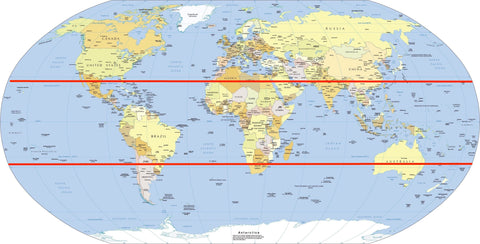
Within these warm climates, the coconut trees can grow in almost any soil condition, including sandy beach areas. The trees are considered a "three-generation tree", as they can continue to produce fruit for more than sixty years, making them a very sustainable crop.

And compared to the destruction of rain forests that results from large palm oil operations, coconut oil trees are not widely known to cause deforestation issues.
Nutritional Facts of Eating Coconut Oil
What is the first thing that comes to mind when you hear "fatty acid"?
Chances are you think of dangerous, artery-clogging fat.
But is this really true?
The truth is, we need fat in order to survive. We need essential fatty acids for brain function, a healthy immune system, and the production of hormones.
The problem is not all fats are the same.
Hydronated oils such as canola, corn and soy are filled with dangerous trans-fats and processed with toxic solvents that are commonly added to packaged foods.
On the other hand, medium-chain triglycerides (MCTs), also known as medium-chain fatty acids, make up 64% of coconut oil.
According to Bruce Fife, N.D., author of The Healing Miracles of Coconut Oil:
"All fats, whether they be saturated or unsaturated, from a cow or from corn, contain the same number of calories. The medium-chain fatty acids (MCTs), however, are different. They contain a little less calories and actually yield fewer calories than other fats"
|
Name of Fatty Acid |
Percentage |
MCT? |
Type of Fat |
|
Lauric acid |
45% to 52% |
Medium chain fatty acid |
Saturated fat |
|
Myristic acid |
16% to 21% |
Medium chain fatty acid |
Saturated fat |
|
Caprylic acid |
5% to 10% |
Medium chain fatty acid |
Saturated fat |
|
Capric acid |
4% to 8% |
Medium chain fatty acid |
Saturated fat |
|
Caproic acid |
0.5% to 1% |
Medium chain fatty acid |
Saturated fat |
|
Palmitic acid |
7% to 10% |
Saturated fat |
|
|
Oleic acid |
5% to 8% |
Unsaturated fat |
|
|
Palmitoleic acid |
<.01% |
Saturated fat |
|
|
Linoleic acid |
1% to 3% |
Unsaturated fat |
|
|
Linolenic acid |
Up to 0.2% |
Unsaturated fat |
|
|
Stearic acid |
2% to 4% |
Saturated fat |
MCT's found in coconut oil increase the rate of metabolism in your body, thereby aiding in weight loss, increasing the level of good cholesterol (high-density lipoproteins) and lower the level of bad cholesterol (low-density lipoproteins).
In countries and populations that consume high quantities of coconut oil - such as those living in Polynesia - studies have shown that these populations have a surprisingly low level of heart disease.
The Wonders of Lauric Acid
With coconut oil composed of nearly 50% lauric acid, let's take a deeper look into the benefits of this fatty acid compound.
Lauric acid is known for it's antifungal, antibacterial, and antiviral properties that help boost the immune system. Lauric acid is converted by the body into monolaurin. Monolaurin is effective in treating skin and body conditions such as acne, candida, athlete's food and influence.
The other great source of monolaurin...human breast milk!

Buying Coconut Oil: Which Type is Best?
We have already discussed where coconut trees are found.
Now, will discuss how the coconut oil is made and identify the best types of coconut oil for you.
Let's begin.
6-12 months after the flower begins to form a seed, the coconut's are picked from the trees. The timing depends on when the buyer prefers their coconut' to be harvested (mature vs medium aged coconut).
After the coconut's are picked from the trees, the next step is to decide on whether the coconut oil will be considered unrefined (virgin) or refined.
2 Main Categories - Virgin Coconut Oil vs Refined Coconut Oil
You probably have heard of hundreds of terms used with coconut oil - virgin, organic, refined, cold pressed, expeller, raw, extra virgin, centrifuge..etc.
Let's start by breaking these terms down and clarifying the types of coconut oils.
Once the meat of the coconut oil is separated from the shell and husk, it can either be left fresh, or dried via the sun, kiln or by smoking.

If dried, it is referred to as "Copra."
So, the main difference between virgin (unrefined) coconut oil and refined coconut oil is whether they start with fresh coconut meat, or dried "copra".
1) Refined Coconut Oil:
Refined coconut oil starts from dried copra and is typically referred to as "RBD" coconut oil: Refined, Bleached, Deodorized. The bleach is not generally a chemical process, but a filter process using clay to remove impurities. Also, during this process, any taste and odor are essentially removed from the oil.
Refined coconut oil starts from dried copra and is typically referred to as "RBD" coconut oil: Refined, Bleached, Deodorized. The bleach is not generally a chemical process, but a filter process using clay to remove impurities. Also, during this process, any taste and odor are essentially removed from the oil.
Well, since the coconut oil is refined, bleached and deodorized this makes it harmful, right?
Not exactly. The refining process leaves the coconut oil's fatty acid profile the same as it was originally found in the coconut. However, the refining process does strip away some of the nutrients and anti-oxidants compared to virgin coconut oil, but still not enough for the RBD to be considered unhealthy.

Expeller Pressed Coconut Oil
Expeller pressed coconut oil represents the majority of coconut oil produced in the world.
When buying a coconut oil, if the plain term "coconut oil" is used without referencing whether it is unrefined, chances are it is an RBD (expeller pressed) coconut oil. This is often the case among many cheaper, mass quantity produced coconut oils.
While these coconut oils are typically irritating when used directly on your skin and hair, they are preferred when cooking because due to their higher smoking point (450°F) compared to virgin coconut oils (350°F).
Liquid Coconut Oil
Also known as MCT Oil, or "fractionated" coconut oil. This coconut oil undergoes a process where all of it's lauric acid is removed. Liquid coconut oil is made up of medium chain triglycerides. These fatty acids bypass regular digestion and are absorbed right away and taken to the liver. These are typically used for weight loss and energy for endurance activities.
2) Virgin (Unrefined) Coconut Oil:
You just learned that refined coconut oil's originate from "copra."
Therefore, a "virgin" coconut oil would be coconut oil produced without dried copra as its starting point. It is considered to be "unrefined."
Here's a picture of Fresh Coconut Meat via Making Healthy Choices
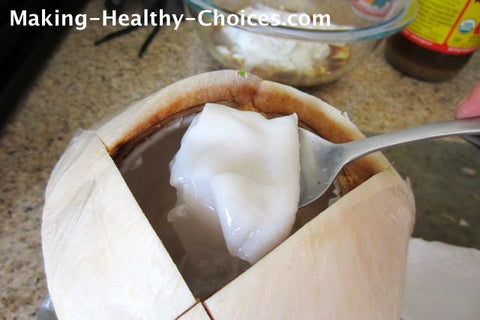
With Virgin Coconut Oil, the coconut milk is extracted from the wet coconut meat using the "wet-milling" process. The oil is then separated from the water of the coconut milk. The next step is used to differentiate many of the premium coconut oil's found on the market today:
Centrifuge Coconut Oil
Centrifuge extracted coconut oil is made by pressing fresh, coconut meat to obtain coconut milk. The water and oil are separated from the coconut by centrifuge force, without using any heat. Centrifuge coconut oil is considered raw and retains its full nutritional profile of that a freshly picked coconut. The result is a light, coconut flavor. It is considered to be the highest quality of coconut oil but the most expensive to produce.
Cold Pressed Coconut Oil
Also referred to as "raw" coconut oil. The cold pressed coconut oils are expeller pressed in a heat-controlled environment, with temperatures not exceeding 120°F. The amount of heat can vary significantly with cold pressed coconut oils. This is a reason why you will have a great variation in quality and taste among cold pressed oils. These can have a stronger, coconut flavor and aroma.
However, it's important to note that many cold pressed oils are marketed as "no heat" in order to position themselves in the market as a premium coconut oil with no heat being used that could be detrimental to the nutrients and minerals found in coconut oil. According to a study that tested anti-oxidants in coconuts, the study found that heat extracted virgin coconut oil to have up to 25% more anti-oxidants than "raw", and "cold-pressed" coconut oil.
Organic Coconut Oil
Organic versus non-organic coconut oil means that the coconuts and coconut trees were grown without the use of pesticides. Looks for brands that are able to provide a "USDA Organic" certification. Although, there some brands where the coconut oil could be considered to have been grown organically but has not gone through the organic verification process.
Extra Virgin
Many companies will often market their coconut oil as "extra virgin", trying to differentiate their self from other "virgin" coconut oils.
What's the difference?
None.
Because a large portion of mass produced coconut oil's fall under the same extraction process, using "extra" virgin is a way for brands to position themselves in a crowded market. Do not fall into the trap of believing their "extra" virgin coconut oil is special.
Coconut Oil Benefits for Skin and Hair
1. Makeup Remover: Coconut Oil allows you to remove waterproof eye mascara without the fear of irritation or breaking out - while moisturizing at the same time! Check out the video below on how to remove makeup with Coconut Oil:
2. Facial Moisturizer: Use coconut oil to soften and moisturize dry, rough or damaged skin. The fatty acids found in coconut oil help to smooth wrinkles and shrink pores. Because of its anti-bacterial properties that help to reduce skin inflammation, coconut oil is even a good option for sensitive and acne prone skin.
Start by using coconut oil as a face moisturizer before going to bed. Apply after cleanser and serum.
3. Coconut Oil Cleansing Method: The basic idea of using coconut oil as a cleanser is to use natural oils as a cleanser to replace the dirty oils of the skin with beneficial oils extracted from the earth.
Via the Oil Cleansing Method:
"The basic concept of this skin care and cleansing method is that the oil used to massage your skin will dissolve the oil that has hardened with impurities and found itself stuck in your pores."
Step I: Combine Coconut Oil with Castor Oil. Castor Oil is naturally astringent, so it helps remove impurities from the skin (ideal for oily or combination skin)
Step II: Apply a quarter-sized amount to your hand and massage onto the face (don't wet skin first).
Step III: Wet a washcloth with warm water and place over your face. The steam will help to separate the oil from the skin. Wipe the excess oil away and leave the remaining oil as a face moisturizer.
Don't take our word though on the benefits of oil cleansing. Here are before and afters photos from Alex Raye of Almost Exactly using the oil cleansing method.

4. Hydrating Body Cream: Use as a replacement for body lotion. Rub in hands to warm up and focus on dry spots such as the knees and elbows to alleviate itchy, flaky, skin.
 Bonus: Try a DIY whipped coconut oil body butter recipe with ingredients such as Shea Butter and other nourishing essentials oils that feel like heaven for your dry skin.
Bonus: Try a DIY whipped coconut oil body butter recipe with ingredients such as Shea Butter and other nourishing essentials oils that feel like heaven for your dry skin.
5. Repair Dry, Damaged Hair: Because of coconut oil's high content of lauric acid, coconut oil is able to bind to your hair and reinforce the hair fibers, thus strengthening your locks and preventing breakage. Coconut oil is also extremely beneficial to chemically treated hair and damaged hair.
For dandruff, the anti-fungal properties of lauric acid are also to fight off Malassezia globosa, a yeast-like fungus that is responsible for dandruff.
Start by massaging coconut oil into the scalp and strands 1-2 times per week, leaving it on for 15-30 minutes, and then shampooing/conditioning as normal. You'll be amazed at how much smoother and healthier your hair looks and feels.
6. Activates Hair Growth: An added benefit of using coconut oil on your hair and scalp is a boost in natural hair growth. By massaging coconut oil on the scalp, the vitamins and minerals are able to boost blood circulation in the scalp and stimulate hair growth.

7. Lip Protection: Use coconut Oil as the base in a simple, DIY homemade lip balm. When used on the lips, coconut oil can act as a natural SPF and protect the lips from environmental pollution.
Bonus: DIY Vanilla Homemade Lip Balm
Ingredients:
- 2 tbsp. Beeswax
- 2 tbsp. Shea Butter
- 2 tbsp. Coconut Oil
- 20 Drops Vanilla Essential Oil
Directions: In a small pot, melt the shea butter, beeswax and coconut oil over low heat. Stir continuously until the mixture is transparent.
Remove the pot from heat and add 20 drops of vanilla essential oil. Mix to distribute the essential oil throughout the mixture.
Pour the mixture into the lip balm tubes or tins. Let cool for 2-3 hours. Enjoy!
8. Homemade Deodorant: Why use a coconut oil based deodorant? There have been numerous studies throughout the years linking aluminum based antiperspirants to breast cancer and Alzheimer's disease.
Bonus: Simple, Homemade Deodorant Recipe
Ingredients:
- 3 tbsp. Coconut Oil
- 3 tbsp. Baking Soda
- 2 tbsp. Shea Butter
- 2 tbsp. Arrowroot Powder
- Essential Oils (optional)
Directions: Melt the shea butter and coconut oil in a double boiler on low heat until mixture is completely clear. Remove from heat and add the Baking Soda and Arrowroot Powder. Stir well.
Add essential oils of your choice (Oils added depends on your preference. Check beforehand for any irritation). Pour into a glass container or deodorant stick. Let cool for 2-3 hours. Enjoy!
9. Prevent Razor Burn: Get a close, smooth shave by swapping your shaving cream for coconut oil. The coconut oil will help to prevent ingrown hairs and razor burn - while moisturizing your skin at the same time. Simply, rub coconut oil on the skin before shaving, shave and pat dry.
10. Diaper Rash and Cradle Cap for Babies: With no added chemicals or artificial ingredients, coconut oil is 100% safe for babies. The lauric, capric and caprylic fatty acids in coconut oil work to treat and kill fungus growth as well as health irritated skin. The high content of Vitamin E. prevents cracking and keep the skin soft.
Bonus: For new mothers, coconut oil doubles as a nipple cream for breastfeeding to soothe irritation.
Check out In Wealth & Health for 5 Effective Ways to Use Coconut Oil on Babies:

11. Prevents Stretch Marks During Pregnancy: For expectant mothers, there can be no bigger worry than dealing with stretch marks before or after pregnancy. Enter coconut oil. Coconut oil makes a great treatment remedy for stretch marks because it can penetrate deeply into your skin. The fatty acids in coconut oil strengthen the cell walls and reduce the appearance of your stretch marks.
12. Cuticle Treatment - Cuticle infections and nail fungus are primary causes for the lack of nail growth. Luckily, coconut oil contains anti-fungal fatty acids to prevent and stop fungus infections. Coconut oil also contains Vitamin E & K. These are essential vitamins to strengthen and grow your nails. Start by massaging your nails before bed with coconut oil and notice the difference in a matter of days.
13. Body Scrub: Mixed with salt or sugar, coconut oil can be used as an excellent scrub to exfoliating dry skin and feet. Here are a few of our favorite homemade sugar scrub treatments.
- DIY Peppermint Sugar Scrub Bars from Happy Mothering
- DIY Gingerbread Sugar Scrub from Mommy Musings
- Homemade Chocolate Coconut Oil Sugar Scrub by How Sweet It Is
14. Soothes Psoriasis, Eczema, Dermatitis: Coconut Oil helps to provide an immediate relief on keeping the skin moisturized and the relieving the redness and burning caused by these skin conditions. The coconut oil is able to the stop the itching and flaking as well as heal the damaged skin to prevent scarring.

Coconut Oil for Teeth and Gums
15. OIL PULLING METHOD: Coconut oil pulling has been used in Ayurvedic medicine for more than 3000 years. It works by pulling the toxins and bacteria out of the gums. Bacteria found in the gums is a major cause of plaque, gum disease and gingivitis.
16. For Brighter, Whiter Teeth: Coconut oil whitens teeth and helps eliminate the plaque cause on your teeth that make them yellow. Try swishing around coconut oil daily to whiten teeth.
17) Instantly Fix Bad Breath: A study found coconut oil to be as effective as a mouthwash when it comes to killing germs and bacteria that cause bad breath.
FAQ Regarding Coconut Oil
How Do I Store Coconut Oil?
Coconut Oil should be stored at room temperature, away from direct sunlight.
Why is My Coconut Oil Solid?
At temperatures below 75°F (25°C), coconut oil will harden into a butter like texture. This is perfectly normal. The oil will revert to liquid form as soon as it comes into contact with your body. If necessary, apply low heat and it will transform into a liquid very quickly.
Should I refrigerate coconut oil after opening?
It's your personal preference on whether to refrigerate coconut oil after opening, however, it's not necessary.
How long is coconut oil good for?
Coconut oil has an average shelf life of approximately two years.
Does Coconut Oil Spoil?
Coconut oil can spoil if it comes into contact with other contaminants such as water, dirt or food particles for the long period of time.
How to Tell if Coconut Oil is Bad?
Look for signs of mold and check for smell or taste difference. If you notice any differences, throw it away.
How Should I Consume Coconut Oil?
There are many ways to consume coconut oil. Coconut oil is ideal for cooking since it has the high smoke point of 350°F for unrefined (400°F refined). It can be eaten by the spoonful, added to coffee, blending with a smoothie, and of course, applied topically to skin and hair.
How Much Coconut Oil Should I Eat Daily?
According to research, to derive the full benefit of coconut oil's medium chain triglycerides (MCTs), an adult should consume around 3 1/2 tbsp. of coconut oil daily. For those beginning to add coconut oil to their diet, it's best to start out with a small amount adjust to how the body reacts to the dosage of coconut oil.
Is it Bad to Microwave Coconut Oil?
The jury is still out on whether the microwave oven radiation causes damage to coconut oil's fatty acids and minerals. However, a similar study has been complete with evidence to avoid microwave ovens. A study published in the November 2003 issue of The Journal of the Science of Food and Agriculture found that broccoli nuked in the microwave lost up to 97% of its beneficial antioxidants.
Can I Determine the Quality of a Coconut Oil by its Aroma or Flavor?
Typically, the highest quality of coconut oils has a very slight coconut aroma and flavor. Cheaper, low-end virgin coconut oil brands tend to have a very strong coconut fragrance, and a burning sensation from the MCTs when swallowed. Refined coconut oil's will have no aroma or flavor because they have been bleached and deodorized. However, a strong or weak aroma doesn't always indicate the quality of the coconut oil.
Can a Coconut Oil's Quality be Determined by the Products Color?
According to Dr. Bruce Fife, author of the "The coconut Oil Miracle", the oil's quality can be determined by the color.
In his book, he provides the following on this topic:
"High quality virgin coconut oil should be snow white in color when it is solid and water clear when liquid. If the oil is some shade of yellow, it is an inferior quality. Pure coconut oil is colorless. Any discoloraton is a sign of contamination or excessive heating during processing. Contamination can be from mold or smoke residue."
Is Coconut Oil Suitable for Someone with Nut Allergies?
Despite having "nut" in its name, coconuts are not classified as nuts. According to a study most people who are allergic to tree nuts can safely use and consume coconut oil, though you should always consult with a doctor if you have any allergies..
Check Out the Best Coconut Oil on the Market
Ready to try Coconut Oil? Learn more about our Organic Coconut Beauty Oil - For Face, Body & Hair - A Natural Revitalizer

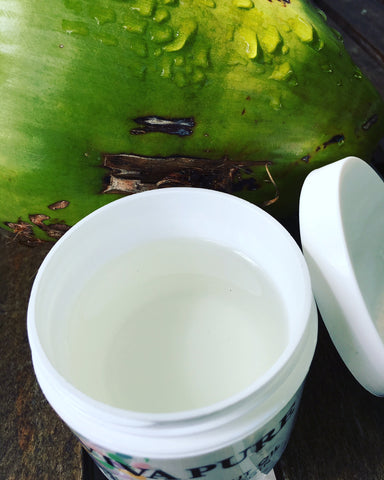



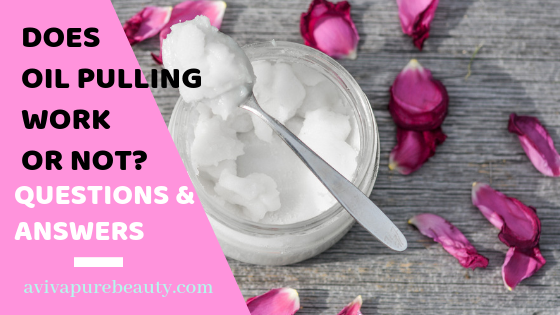
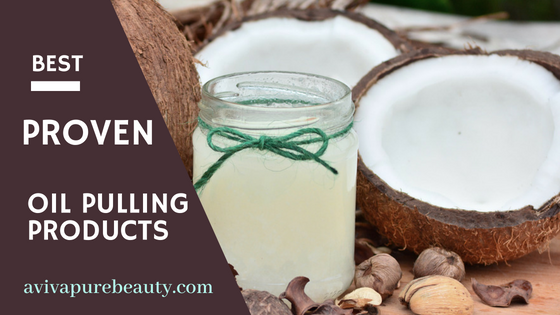

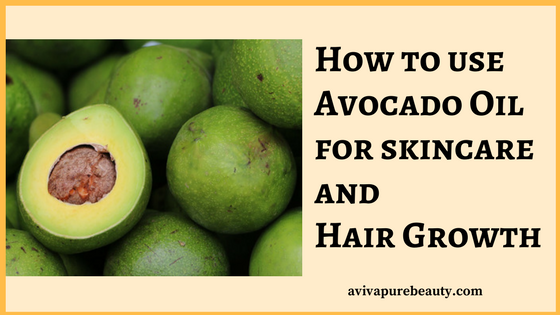


Comments
Awesome guide! I had been debating on what the best coconut oil type is.
Very informative article. I have been using coconut oil for two years and for everything on your list. I rub it into my hair twice a week to make it stronger. And I have been using it on my face and the top of my hands to fade age spots. Believe it or not..I am 83 and there are no age spots anywhere. You can’t get any so-called age spot reducer out there that works better and for less money. Oh and it erases fine lines on my forehead and above my lips. Quite honestly, it is something that I wish I had learned about many years ago!